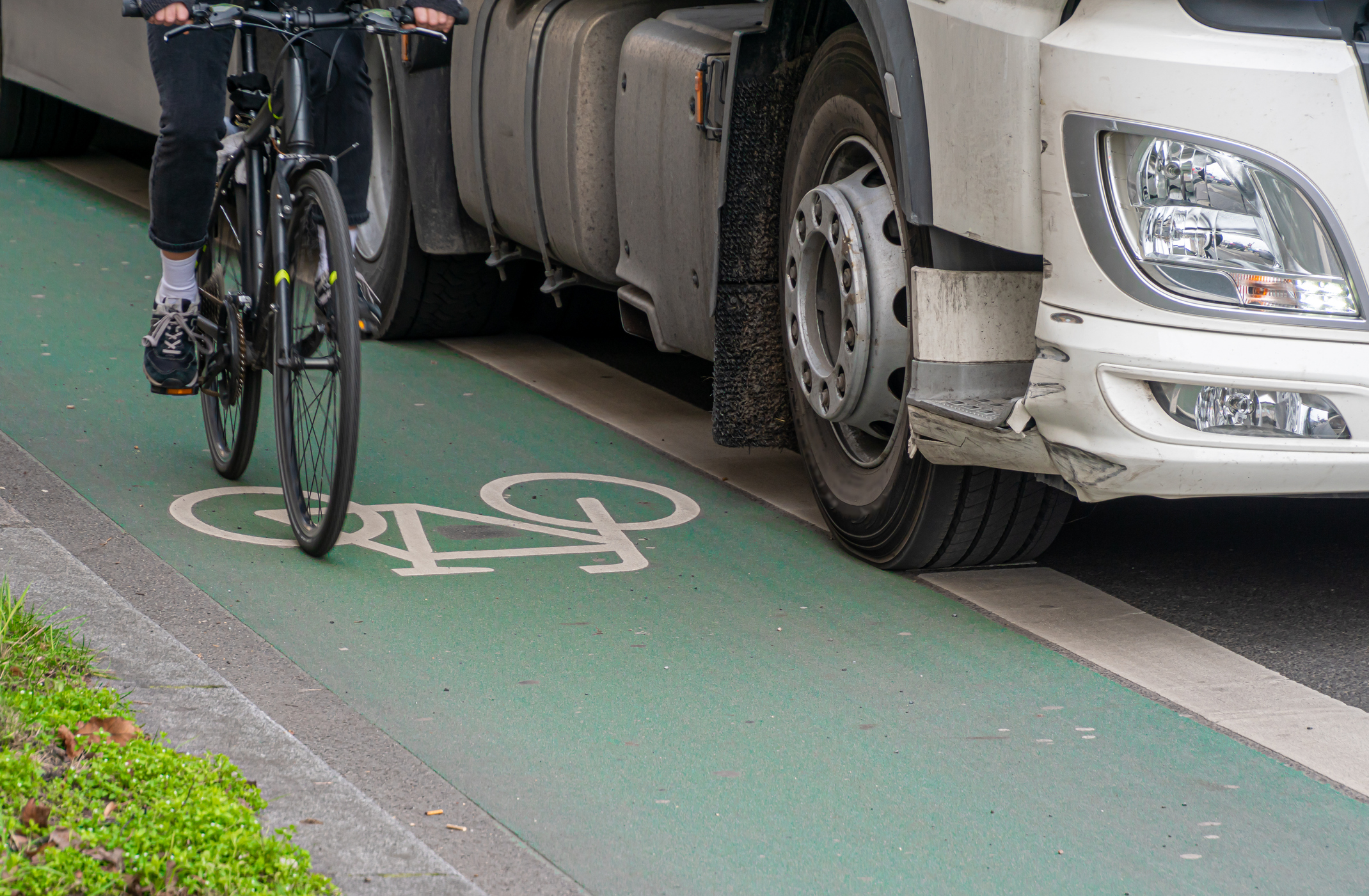
European Parliament votes to allow teenagers to drive trucks and cars
The European Parliament voted this week to allow 17-year-old teenagers to drive large trucks, if accompanied by an adult (older than 24 years), and to be allowed to drive solo at 18. The current recommended minimum age for driving a truck in the EU is 21, although several countries allow 18-year-olds to drive heavy goods vehicles (HGVs) under certain conditions.
We believe that this is a very dangerous development.
Crash rates sharply decline with age, and any reduction in age limits would have serious repercussions for cycling safety. Research by the German Insurance Association shows a significant crash risk among 18-20-year-old truck drivers, revealing that they contribute to around 25 percent of accidents per number of licence holders — a risk that diminishes with age, dropping to around 1-2 percent for older age groups.
We also know that maintaining constant vigilance in the cab for adults accompanying younger drivers is challenging. We are seeing this more frequently with autonomous vehicles colliding with pedestrians and cyclists, even with someone in the driver's seat, which underscores the challenge of staying alert when not actively driving. One common type of accident is trucks hitting cyclists while turning right at a junction, a situation that unfolds very quickly.
MEPs justify allowing adolescents to drive trucks by pointing to the industry’s shortage of qualified adult drivers. However, according to drivers' unions the main reason is the sector’s low wages, poor working conditions, and long anti-social hours. Allowing young teenagers into the sector will not solve these problems.
The Parliament also voted to allow 16-year-old adolescents to drive cars up to 2.5 tonnes with a speed limited to 45 kph. The current B1 licence, available from age 16, is used for low-speed quad vehicles weighing between 0.2 and 0.4 tonnes. The Parliament text would allow any 16-year-old with a B1 licence to drive a vehicle weighing up to 2.5 tonnes, which would include very large vehicles like Ford Rangers and Ram 1500s.
Evidence shows the vulnerability of young drivers of SUVs and trucks, particularly those aged 16-17, that they face a collision risk twice as high as their counterparts aged 18-19. After age limits were loosened in Finland, they found that 17-year-olds account for about eight percent of all road infractions even though they make up just 0.3 percent of all licence holders.
But what about the speed limiter? The Parliament text stipulates that 16-year-old B1 licence holders can drive vehicles weighing up to 2.5 tonnes if it has "a maximum speed technically limited to 45 km/h." But it's not clear what "technically limited" means. Would a cruise control button with an off switch just next to the fingers of an impatient 16-year-old driver fit this condition? Other speed limiter devices are easy to install but equally easy to overcome and tamper with.
Finally, the Parliament also voted to increase the weight limit of B-category vehicles (typical passenger car) to 4.25 tonnes. While they argue that this is to accomodate new electric vans under B licences, parliamentarians are extending it to all "alternatively fueled" vehicles. To put that in perspective there is no car, electric or otherwise, on the EU market that weighs anywhere near 4.25 tonnes. The nearest would be the electric Hummer military-style vehicle from the US (4.2 and 4.5 tonnes), or the Tesla Cybertruck (4.2 tonnes). We see this 4.25-tonne limit as an incentive for the industry to continue selling and promoting ever-larger private cars in the EU market.
Other points of note in the text;
- Drivers will have to renew their licence every 15 years, the current legislation requires renewal every 10 years though Member States can currently opt to increase this to 15 years. The Parliament text thus locks-in the 15-year renewal.
- Mandatory medical check-ups to renew the licence was not supported. Instead, renewal will involve ‘self-assessment’, though Member States can choose to impose a medical assessment.
Positive points;
- In the Annex, which contains the training and testing content, trainee drivers will be taught about ‘dooring’ cyclists, the dangers of overtaking cyclists, and other useful training content.
- Parliament also agreed to putting new drivers under a probationary period, and the legal alcohol limit was lowered to 0.2 grams of alcohol per litre of blood for new drivers.
With the proposed reduction in age limits for high-risk categories and the increase in vehicle weight limits, these changes in crucial legislation pose serious safety concerns rather than improvements.
As the Parliament takes this position into negotiations with the Council (member states), whose position is more or less aligned with that of the parliament, we do not expect this to end well and on balance lead to increased risks for all road users.
Contact the author
Recent news!
Upcoming events
Contact Us
Avenue des Arts, 7-8
Postal address: Rue de la Charité, 22
1210 Brussels, Belgium









